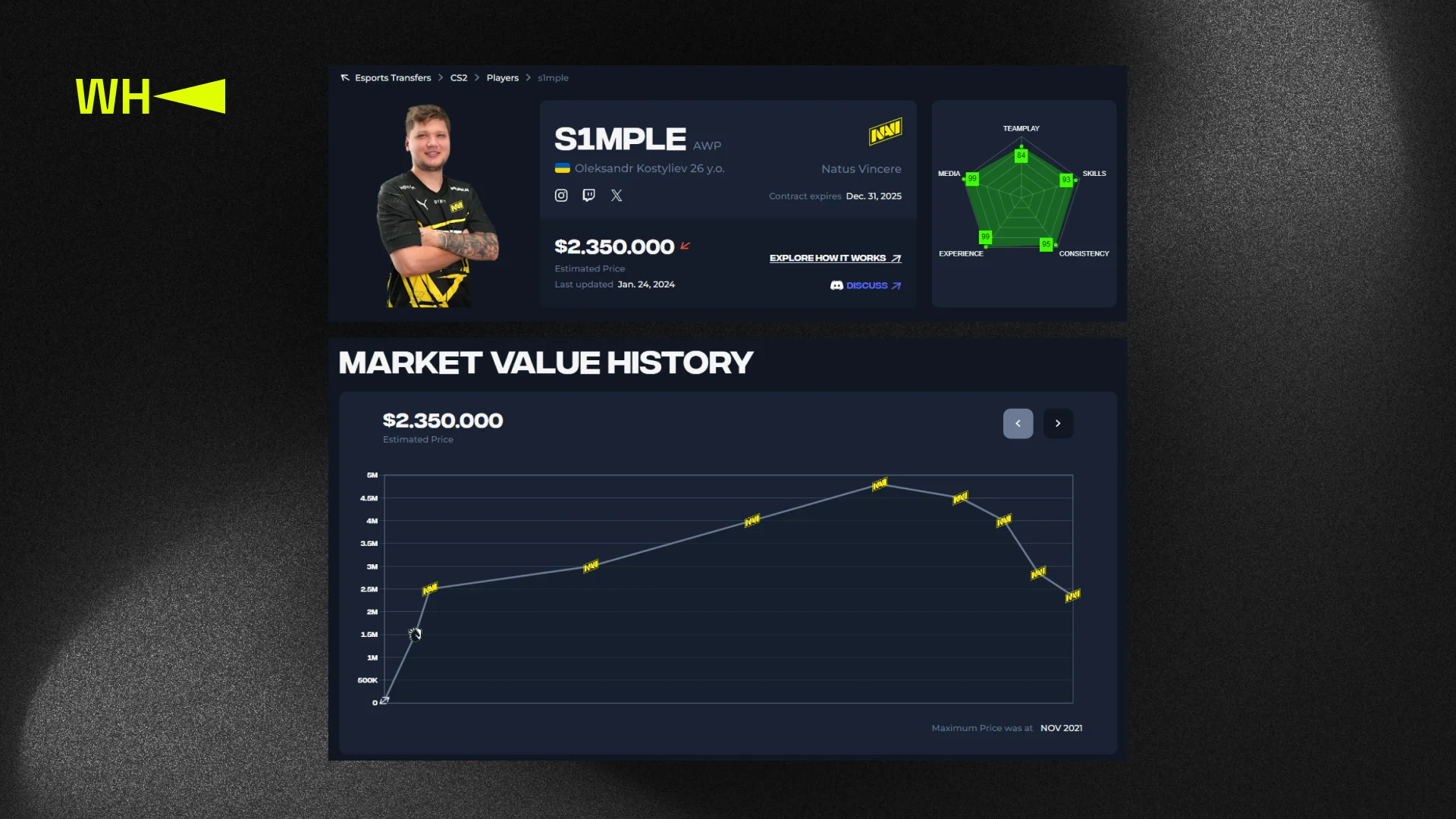May 10, 2024
Fair Price: How to Determine an Esports Player’s Cost

3 min read
Given that most esports deals are made — and remain — behind closed doors, it’s a challenge to predict the cost of player transfers. Meanwhile, comparing two players with similar performance levels can reveal stark differences in their price tags. This article delves into the multifaceted world of player pricing in the esports market.
Stats
Undoubtedly, statistics hold a lot of sway over a player’s value. It’s not just about the general indicators but also about their consistency. For example, an esports athlete may be deft but inconsistently so. Naturally, their price will not surpass that of a pro gamer who steadily scores well.
At Esports Transfers, we meticulously track 18 metrics that paint a comprehensive picture of a player’s skills. Our EPV-1 algorithm-based pentagon provides an in-depth analysis of an esports athlete’s overall performance.
It sounds logical: the better a player’s stats, the more you are willing to offer for them. The player themselves is a factor directly influencing this aspect of price determination. However, there are many other factors that the athlete cannot control to such an extent.
Team
Another factor influencing a player’s price is their team. For example, the price for members of a team that fights mainly on the tier-5 scene is $30,000 at most, while organizations that play in international tournaments sell their players for hundreds of thousands of dollars — at least.
Consider this: a player’s price is a reflection of the team’s chances of qualifying for international tournaments. The higher the price, the greater the chances. This dynamic underscores the fact that a player’s performance is not just about individual skill but also about the team’s collective success. It’s a symbiotic relationship that influences player pricing.
Market state
As I said, there are also factors that esports athletes have no influence over, such as the general state of the market. The price of some pro gamers can be estimated at a million dollars, but this does not mean that this will become their transfer price. After all, there are no orgs on the market for whom it would be profitable to buy such a player. Most professional organizations now mainly grow their own new players by creating academies, i.e., junior squads, instead of making multi-million-dollar deals.
However, when additional investments enter the scene, the market changes. For example, the emergence of a new esports organization looking for players raises prices. As in any industry, demand creates supply. Therefore, as soon as large transactions begin to take place, prices naturally adjust.
Transfers
Transfers can dramatically change a pro gamer’s value. Of course, everything depends on the transfer level. If a tier-5 player ends up in a higher-profile org, their price increases, and vice versa. After the transfer, the esports athlete’s price can double, reflecting the organization’s hopes for them.
Potential Risk
Buying a player is an investment, and any investment comes with risks. Therefore, the esports athlete’s price also demonstrates how big or small the risks are. A high price is a kind of guarantee that they will bring the expected benefit. If a player changes teams too often, is surrounded by scandal, or their team does not reach the finals of reputable tournaments, their price drops.
The esports market is in a constant state of flux. Each new tournament and transfer affect prices, increasing them for some and decreasing them for others. To effectively navigate it, you need to track a vast amount of data — and this is what Esports Transfers does. We offer a portfolio of many players with estimated prices. Esports Transfers browses through all sorts of open sources to provide you with fresh, already analyzed information that helps you make decisions.
